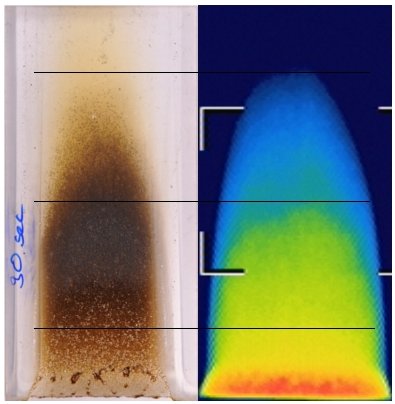Fire Safety in Space
Fire is one of the main threats in manned spaceflight. The research is aiming for suitable qualification tests to overcome the existing limitations in the portability of test results from ground to space.

The qualification of spacecraft materials regarding its fire resistance is defined through tests on ground (NASA-STD-6001; ECSS-Q-ST-70-21C; ISO 14624).
There, the sample is vertically mounted and ignited on the lower (upward propagation test) or upper (downward propagation test) end. The airflow velocity is automatically bound to the natural convection. It could be increased through blowing but cannot be reduced. In ideal microgravity with no natural nor forced convection any material will extinguish after a certain time – this independent of the oxygen concentration. But in a manned spacecraft the necessary air conditioning induces a forced convection.
There are strong indications that the worst condition for a stable propagating and not self-extinguishing fire is at lower flow velocities than those that can be achieved on ground. Another aspect for this kind of research is that the standard tests do only foresee experiments on flat unstructured samples which might not necessarily be the application case.


 "
"